NOVEMBER 9, 2021: The day started in Sintra. Sintra is a place like no other. The nobility of Portugal built palaces here. The wealthy of Europe built elaborate mansions here. Last night, from our apartment, we saw a hill covered with trees and dotted with grand houses and castles. The combination of the lush vegetation and the many spectacular buildings has made Sintra a UNESCO Word Heritage Site. In the morning, however we saw much less – the hill was covered in fog. We hoped that as the morning wore on, the fog would disappear.
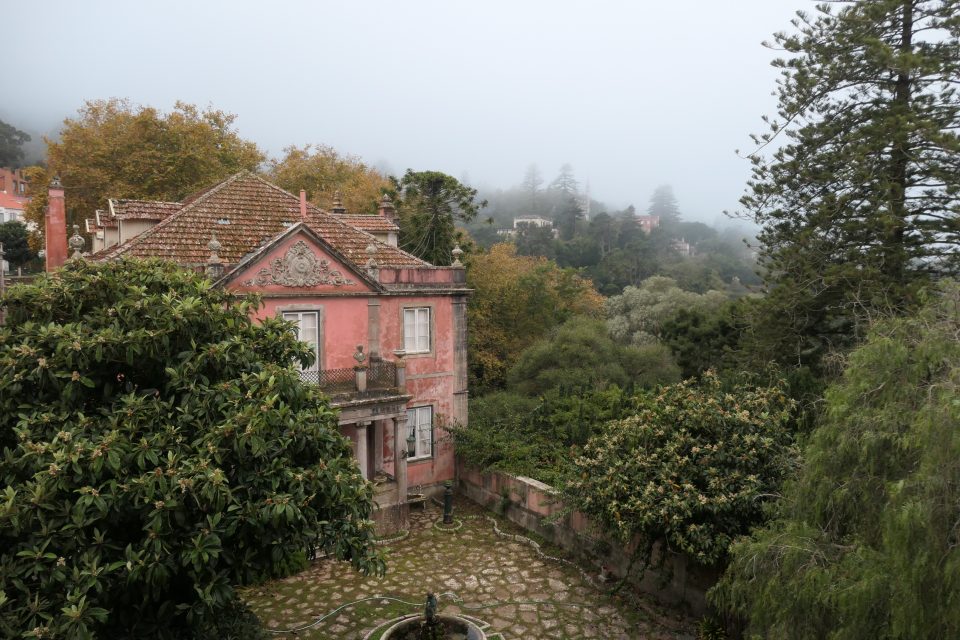
The view from our apartment. Morning fog is hiding the houses and castles on the hill.
We checked out of our apartment and walked to the center of town. Our first destination was Beca da Judaria – the street of the Jews in the Jewish quarter of Sintra. Like in most places, the Jewish area is usually in the historical district. Once again, we walked through narrow lanes dotted with tourist shops and cafes. Compared to Alfama in Lisbon, this was upscale. We found the Beca da Judaria, but aside from the street name sign, nothing about it seemed to say that this was once a Jewish neighborhood.
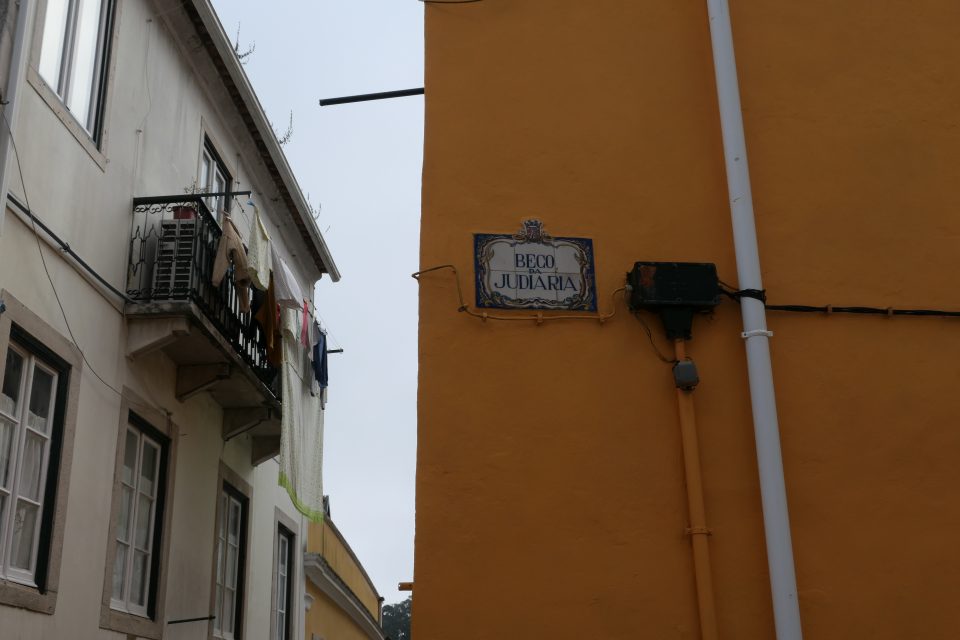
Beca da Judaria 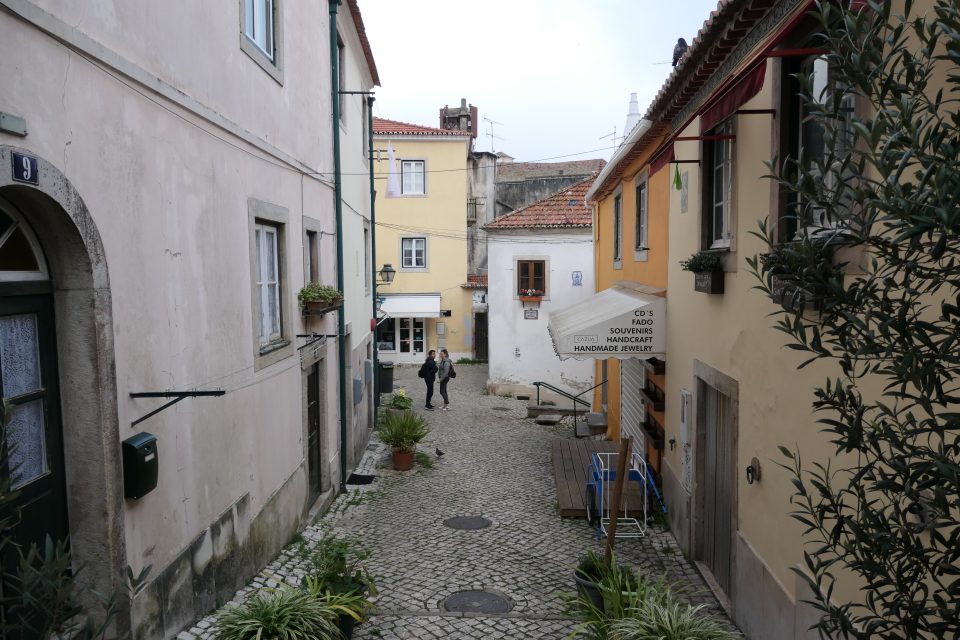
Beca da Judaria
I was very curious to know if Tourist Information would be aware that there was a Jewish quarter. So I went and asked. The young woman at the counter thought for a minute, then said Yes, took out a map and marked exactly where it was. Nice!
Near tourist information was the National Palace of Sintra – the best-preserved medieval royal residence in Portugal.

The National Palace of Sintra
The weather was clearing up, and we decided to take our chances at the Pena Palace. The palace sits on top of a mountain, and when there is fog, it is difficult to see. While waiting for the bus, a tuk-tuk offered to take us. When the driver heard that we were from Israel, he exclaimed “Did you know that 80% of the Portuguese have Jewish blood?” We actually learned in the Jewish Tour of Lisbon, why there are so many Portuguese with Jewish blood, or in other words, why there were so many New Christians (converted Jews). Basically, the Portuguese saw what happened in Spain after the expulsion – Spain was a wreck, missing many vital professions that the Jews used to do. Therefore, when the expulsion order came years later in Portugal, it was leave or convert, but to leave was made impossible. While Spanish Jews left Spain, the Portuguese Jews stayed and became New Christians.
As we drove up the mountain, the driver told us the story of the palace. There was a time in a Portuguese history when Rio de Janeiro, the city in current Brazil, was the capital of all of Portugal. The king, at the time, sent his 16-year-old daughter to Portugal from Rio, to quell a rebellion. She realized she needed an ally to do this and married a prince from Central Europe. He loved her so much, and knew she missed the lush green landscape of Rio. To make her happy, he imported hundreds of different species of plants from around the world, even as far away as Australia and New Zealand. This made the lush and varied growth we see today. He also built her this spectacular castle, but she never saw it finished. She died giving birth to her 11th child, at the age of 34.
We reached the castle and Mark gave the driver a two euro tip. The driver came and hugged Mark and said “Nobody from Israel usually tips me”…
We had shared the tuk-tuk with two other tourists from Slovenia, a mother and daughter. When we ran into them again in the castle grounds, the mother said “In my country, we have a saying, that if we meet three times, we go for a drink. I replied that in Israel, we say after three times, we go for ice cream. She thought for a moment and then answered that her country is better.
The castle was truly unique. It makes use of Egyptian, Moorish, Gothic and Renaissance elements. It has design elements taken from Big Ben in London, Taj Mahal in India and St. Peter’s Cathedral in Rome.
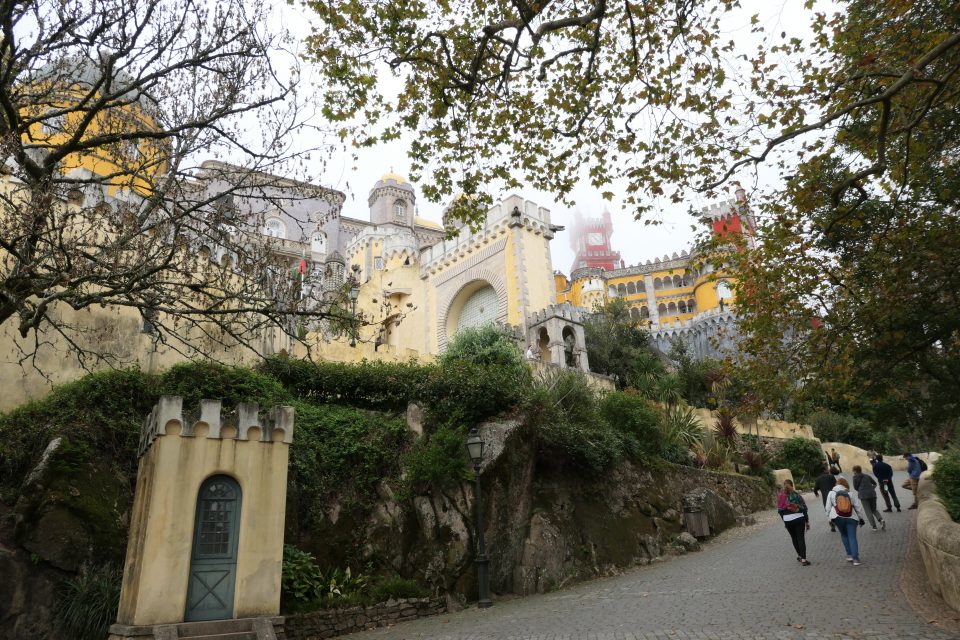
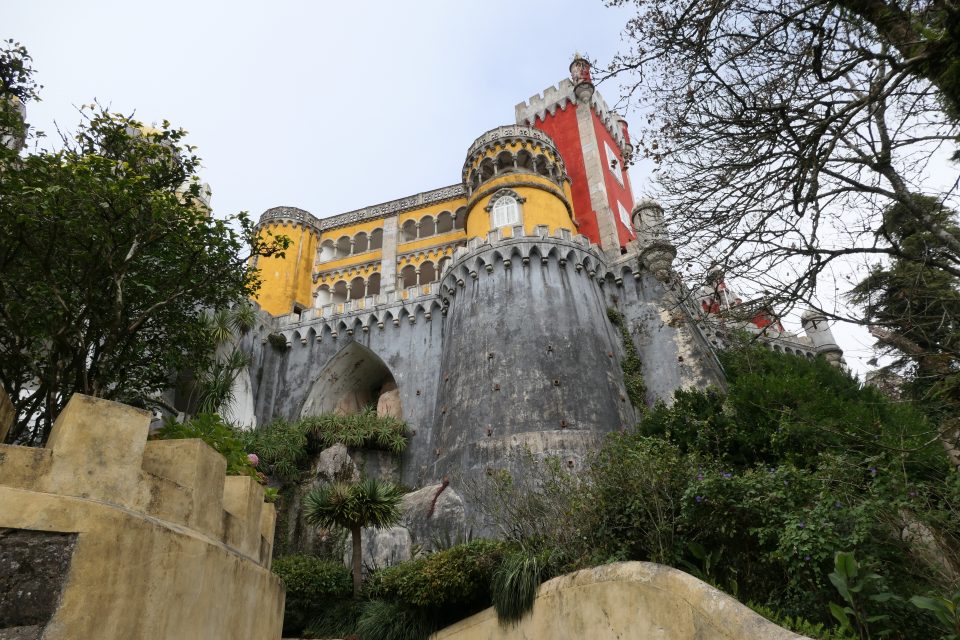
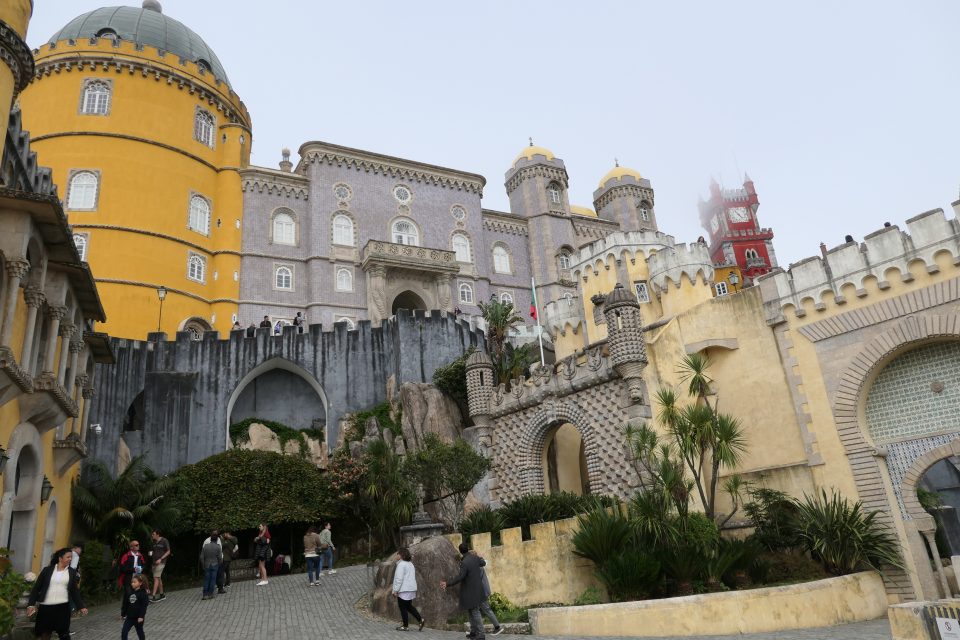
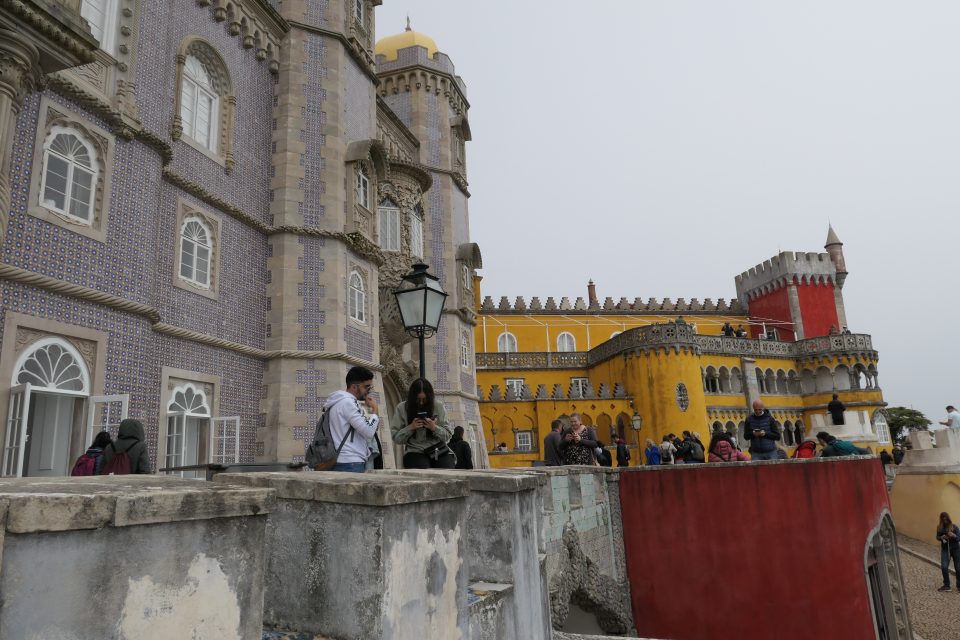
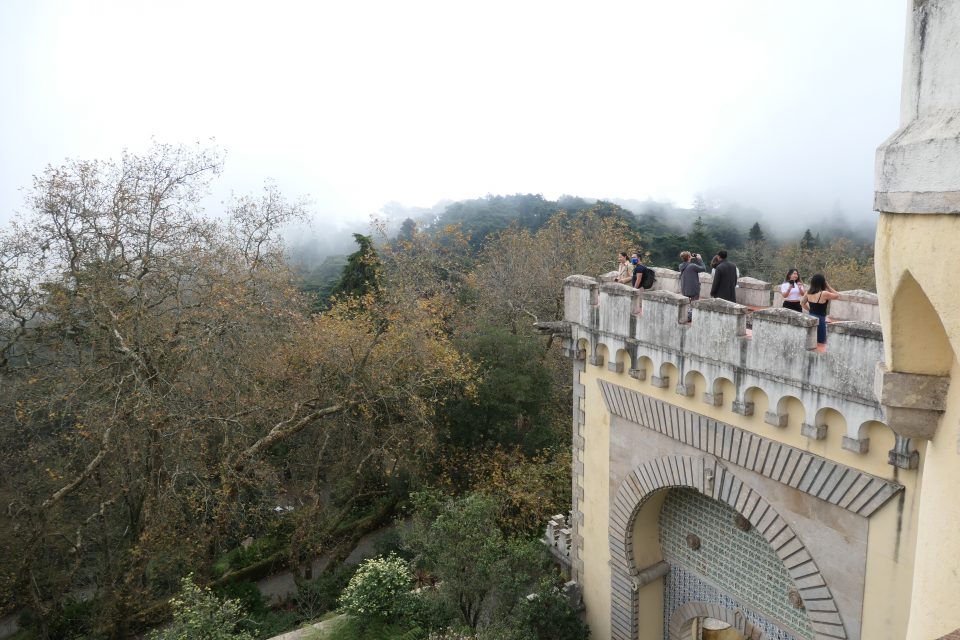
Lush vegetation all around 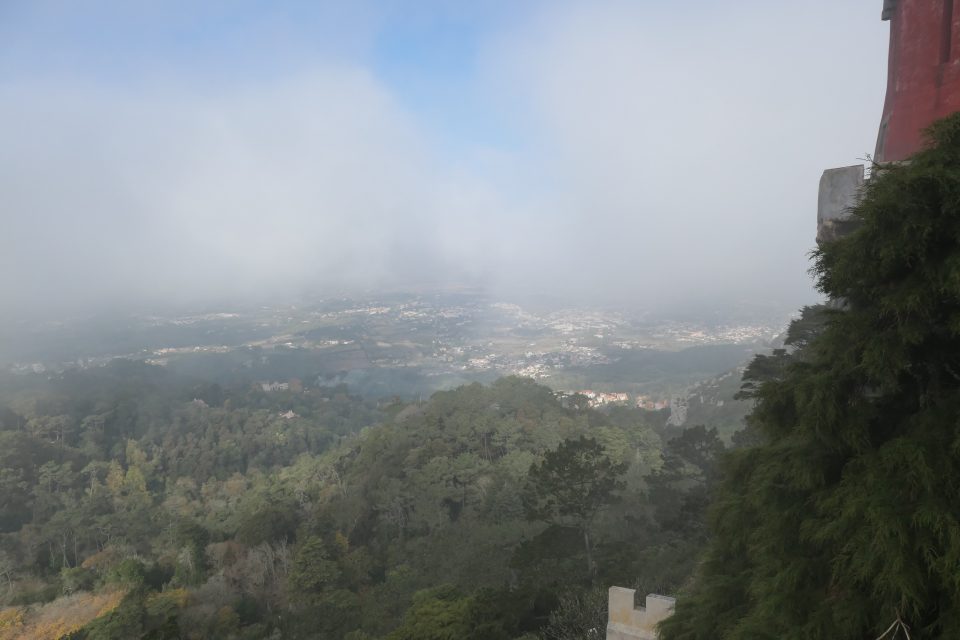
View from the top
After visiting the different terraces on the castle, we took the bus back to the center of town, picked up our car and drove inland to our next destination – Alenquer. This is a large town about an hour northeast of Lisbon. For me, this was the equivalent of going from Tel Aviv to a museum in Hadera (if there is one). Alenquer, like Hadera, is not on the usual tourist track.
Our destination in Alenquer was the Damião de Góis and the Victims of the Inquisition Museum (Museu Damião de Góis e das Vítimas da Inquisição). Damiao de Gois, born in Alenquer, was a Portuguese Humanist and a royal senior official who travelled throughout Europe at the service of the King of Portugal. At the end of his life, he was imprisoned by the Inquisition for his Lutheran beliefs. He is buried in the church which now houses the museum.
The museum is beautifully designed. Unfortunately, the English audio guides were not working, and all the displays were only in Portuguese. The young worker gave us a bit of background in her broken English. We did our best trying to translate with the camera feature in Google Translate, but it was cumbersome. After a while, the worker found a catalog of the exhibit that was in both English and Portuguese, which helped us greatly to understand what the displays were about. In addition to the displays, there was also a short movie about Damiao de Gois, in Portuguese but with English sub-titles.
The main focus of the museum is on Damiao de Gois, about his life and his many works. In addition, there are two display panels talking about the Jews of Alenquer. Seemed to me a bit forced, like it was added to ensure funding from the Portuguese Network of Jewish Quarters, which was one of the sponsors of this museum. On the other hand, when people come here to learn about Damiao de Gois, it is good that some information about the Jews is also available for them to see. We were the only ones in the museum and asked if they get many visitors. The woman said that schools bring classes here to learn.
From the museum, we walked up the road to the historical center at the top of the hill. There a Rua da Judaria that still exists till today.
Our next destination was the city of Torres Vedras. The road there was a two-lane road that wound its way through the hills and past small villages. The hills were dotted with grape vines whose leaves had turned to the fall colors, some red, some orange, some brown. Beautiful!
Torres Vedras is a larger city with a castle at the top of the hill (castle at the top of the hill seems to be the recurring theme here). All we knew was that there was a Jewish Community Heritage Center near the gates of the castle – without knowing an exact address. We put castle into the GPS and parked the car just outside the area with narrow lanes. We were now in a historical district that was totally not-commercialized – just a neighborhood for locals.
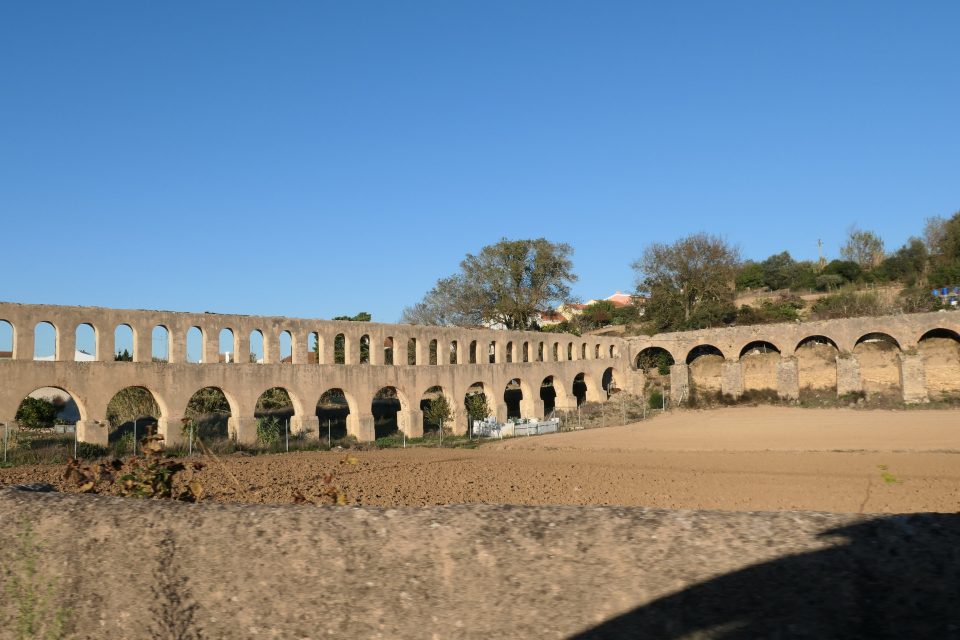
Entrance to Torres Vedras 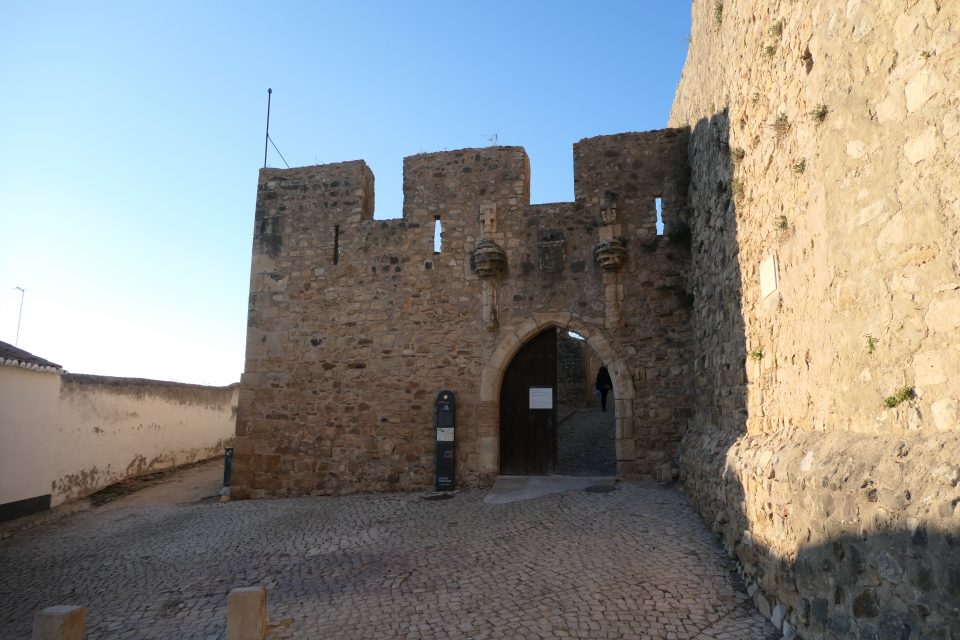
Gates of the Castle – Torres Vedras
After some wrong turns, we finally found the Jewish Community Heritage Center. It is a small, three room museum about Jewish life in general, Jews in Portugal, and specifically Jews in Torre Vedras. It was very well done, with all the displays in both Portuguese and English.
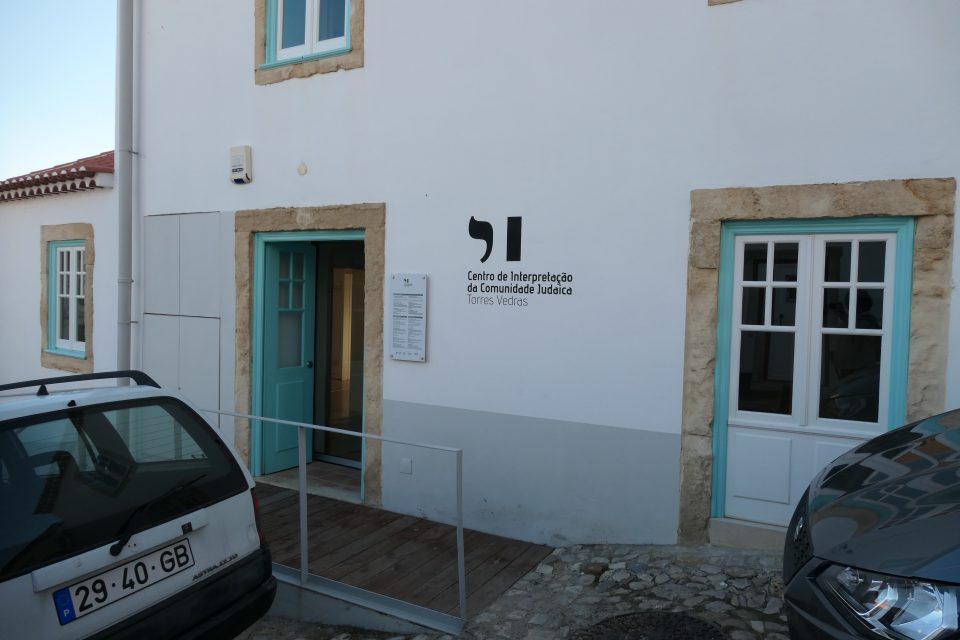
The Jewish Community Heritage Center in Torres Vedras 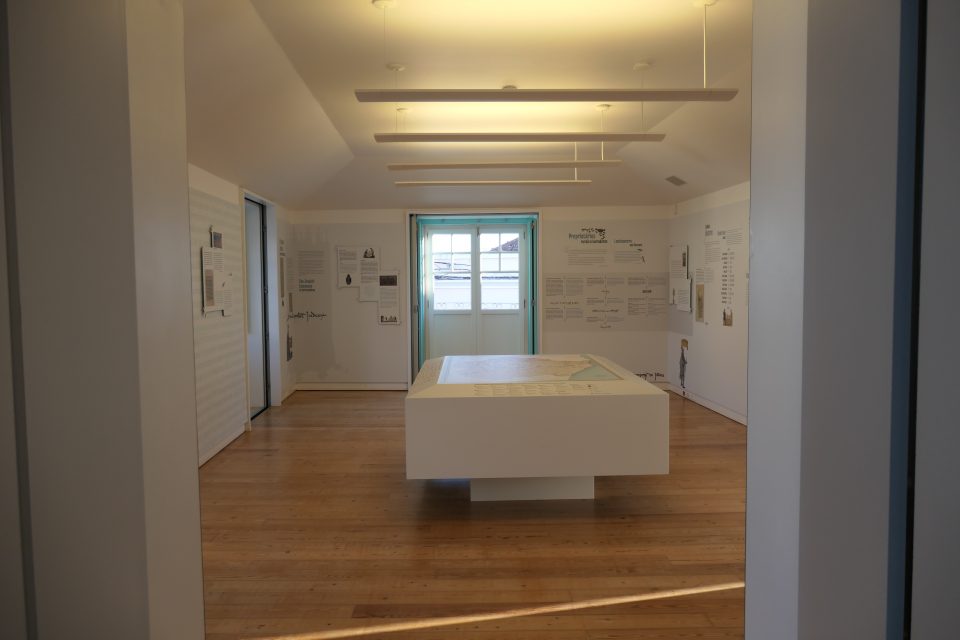

A panel from the museum showing what professions the Jews held in the Torres Vedras 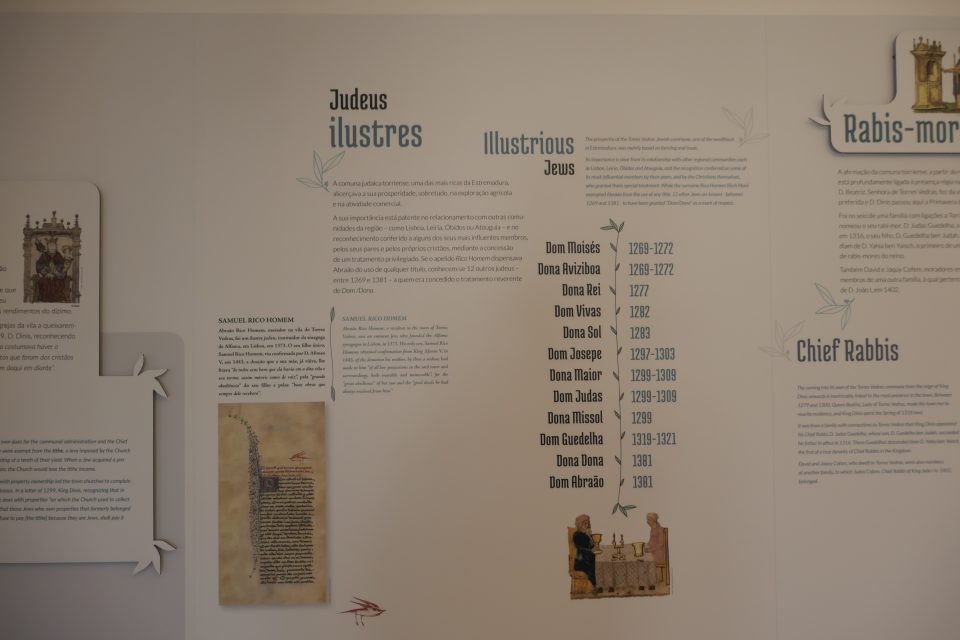
Illustrious Jews from the area. Dom/Dona was granted as a sign of respect.
While in the previous museum, the story of the Jews was a small part, here it was the main focus. Aside from the Jewish history, there was also a movie, where a female scribe talked about her craft and the rules of writing a Sefer Torah. She felt a sense of connection to her history knowing she is doing something exactly the way it was done 2000 years ago.
From the museum, we went walking through what was once the Jewish Quarter. On one corner, there is a street sign indicating that this was once the street of the Jews.
We were pressed for time, we wanted to reach our next destination, Óbidos, before dark. We did not succeed, but were rewarded seeing the walls of the medival city Obidas lit up at night.
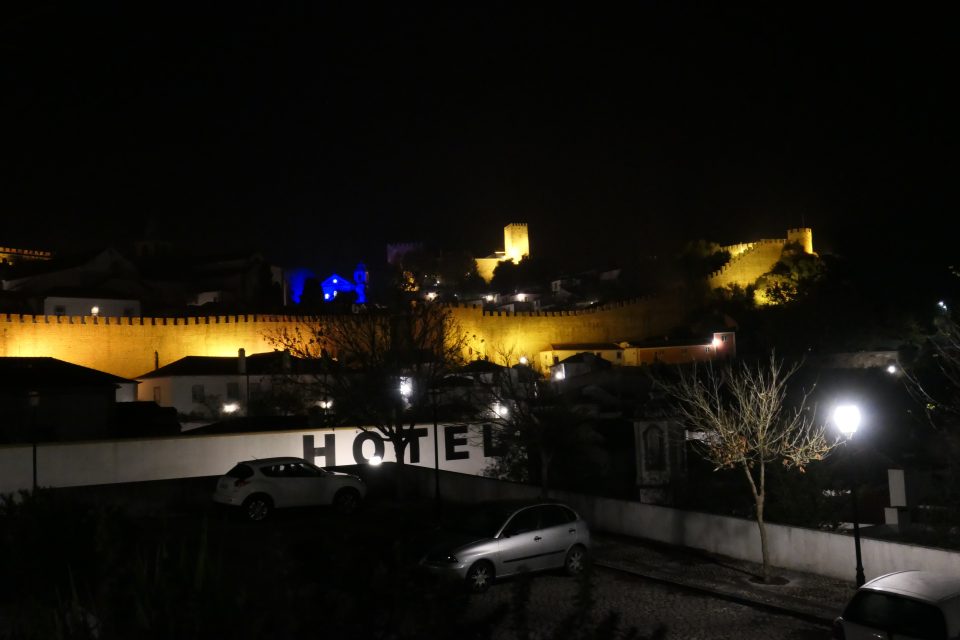
The walls of Óbidos lit up at night.
We had an apartment right outside the city walls. In the apartment, was a welcome tray with samples of local items that the host sells. I tried the Ginjinha or simply Ginja – this is a cherry liquor sold throughout Portugal, often served in small chocolate cups. Óbidos is known for its Ginja, and this was one the host’s mother had made. Usually there is no problem buying liquor kosher-wise, but in telling us how she makes the liquor, his mother puts in grape wine. That is a red light in terms of kosher. I had a taste (super delicious!) but Mark did not. We are trying to figure out if adding grape wine is usually part of the process, or something special his mother did.
Mark made us dinner, I worked on my blogs, and then fell asleep exhausted. It had been a long day and tomorrow we continue onward.
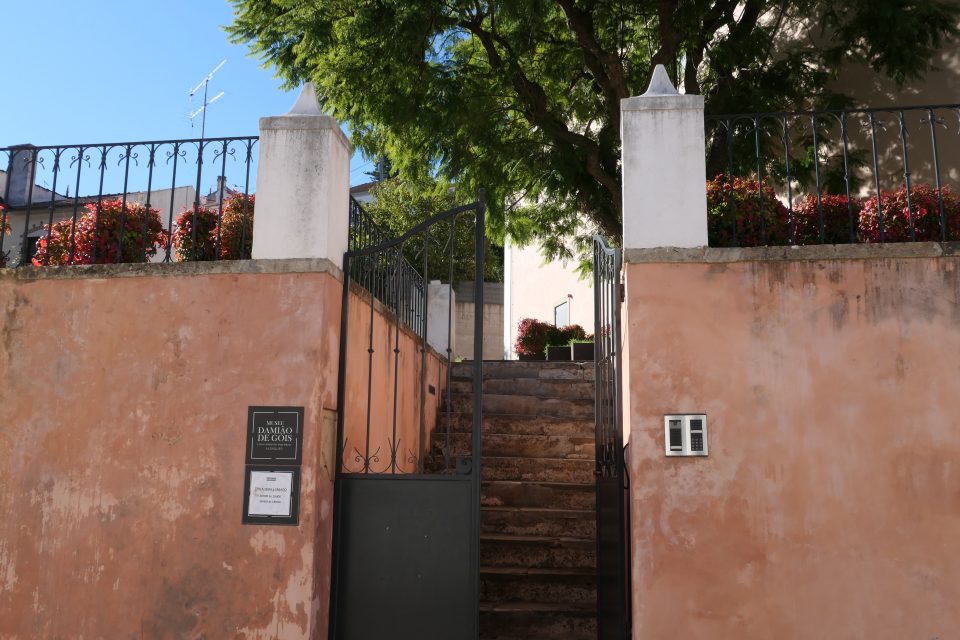
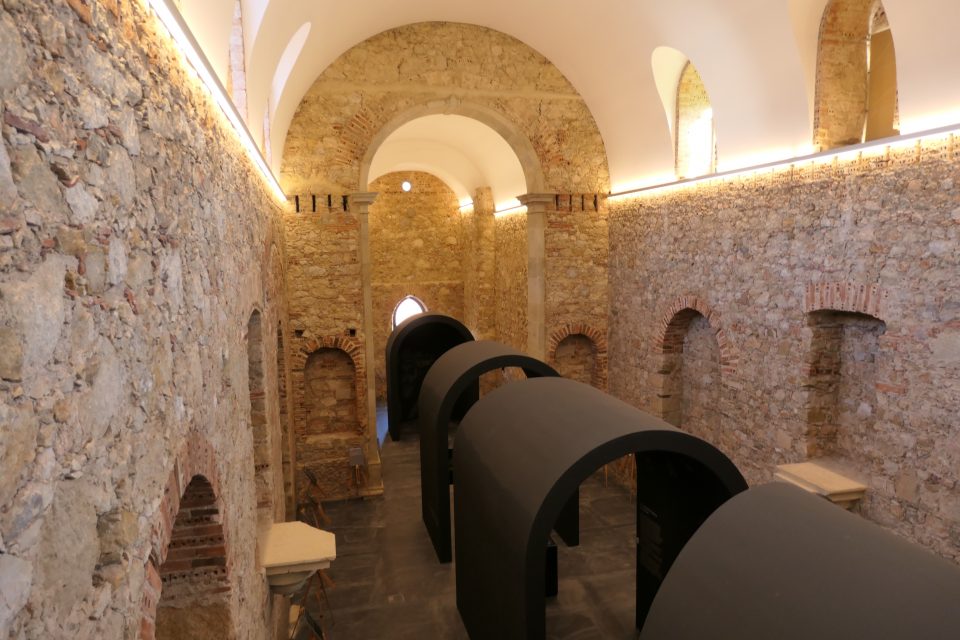
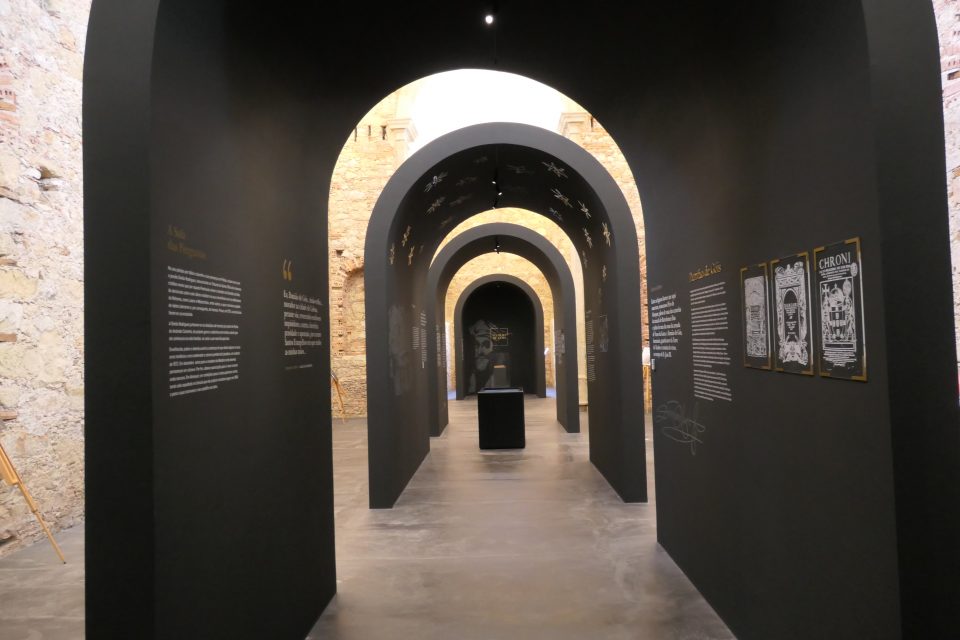
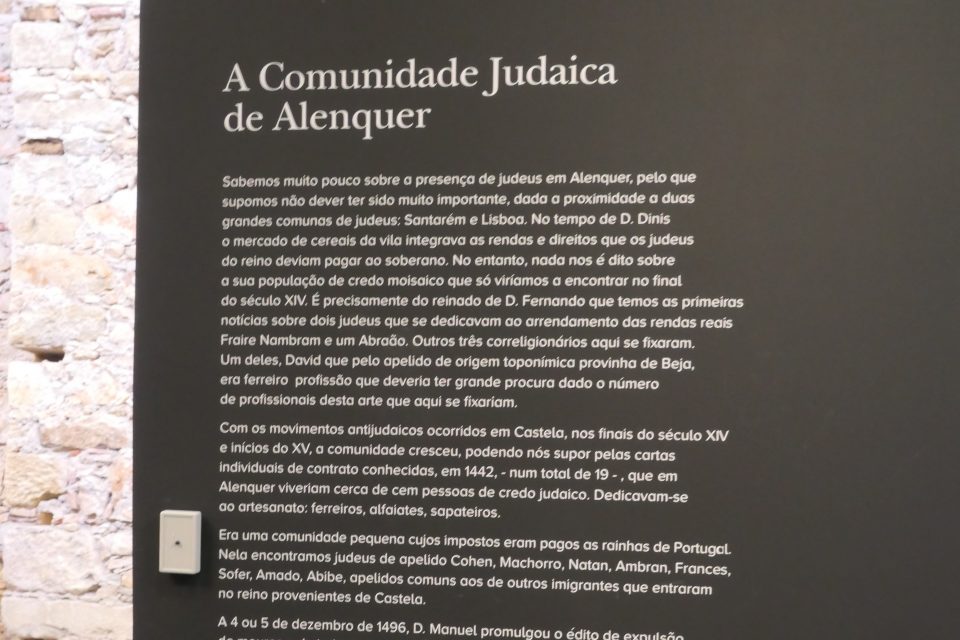
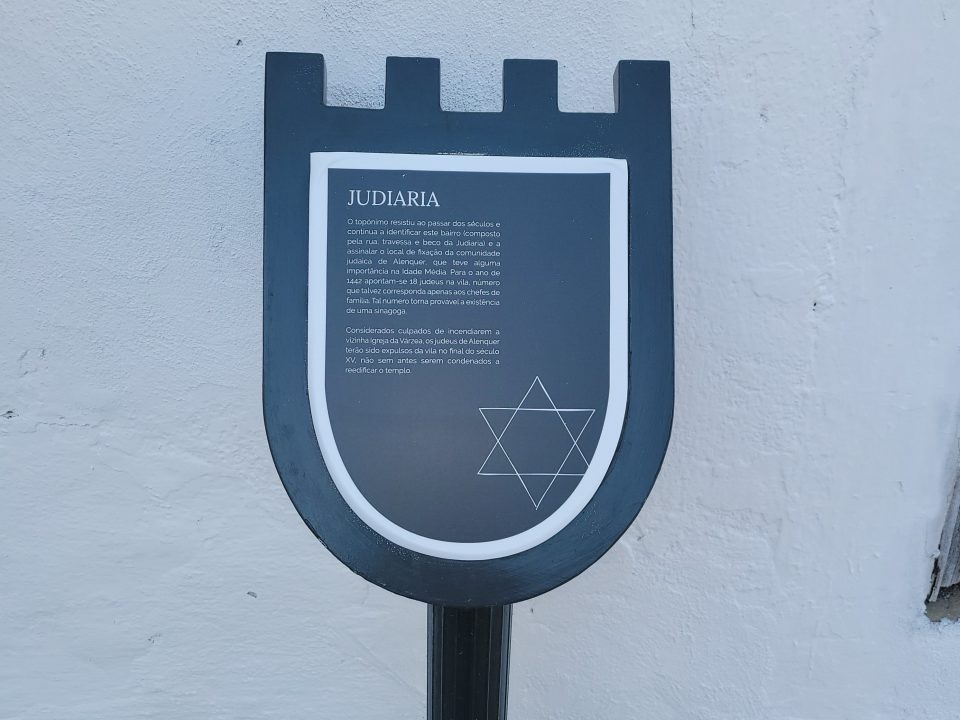
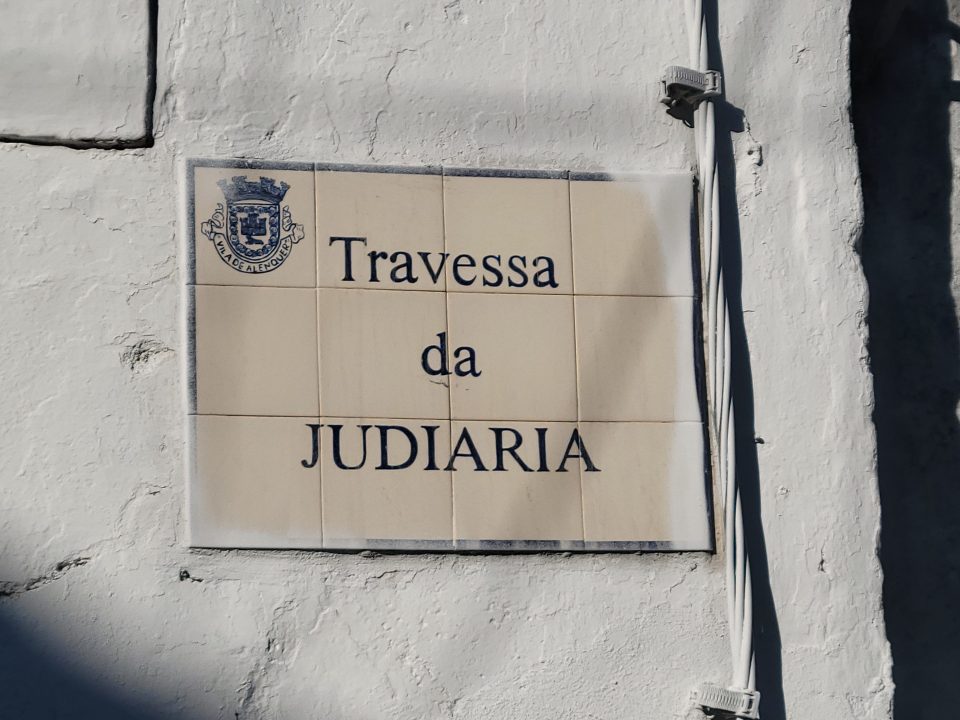
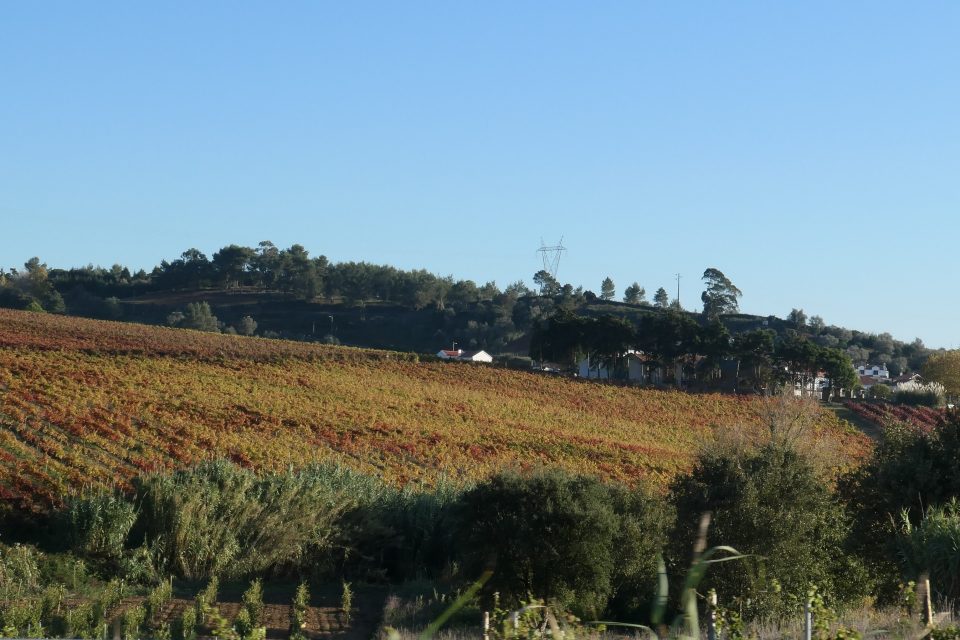

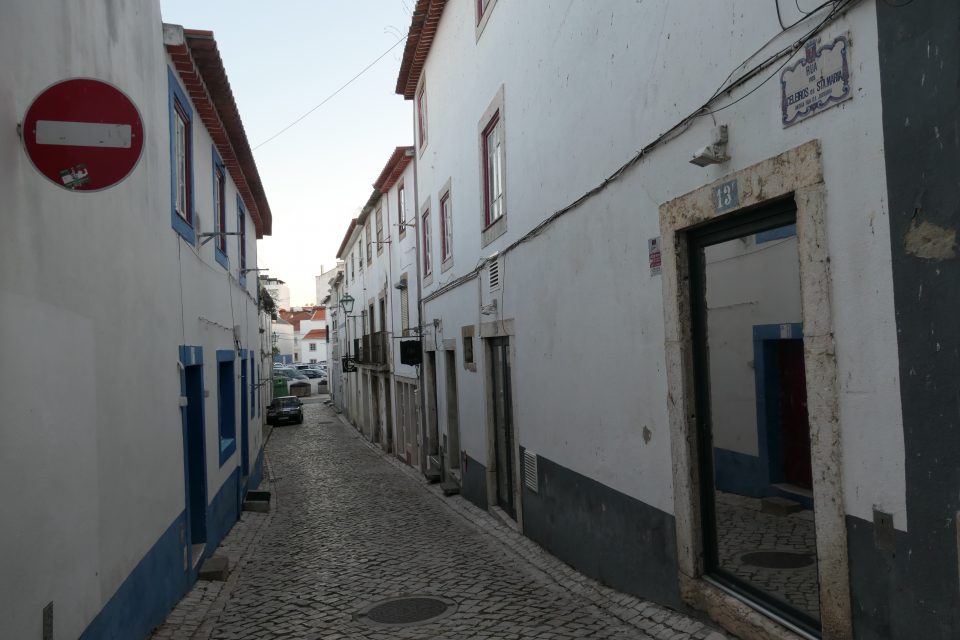
slight changes, 2nd para “dotted”, Torres Verdas “recurring”, also Torres Verdas “we (went) walking through what was one (once) the Jewish Quarter”